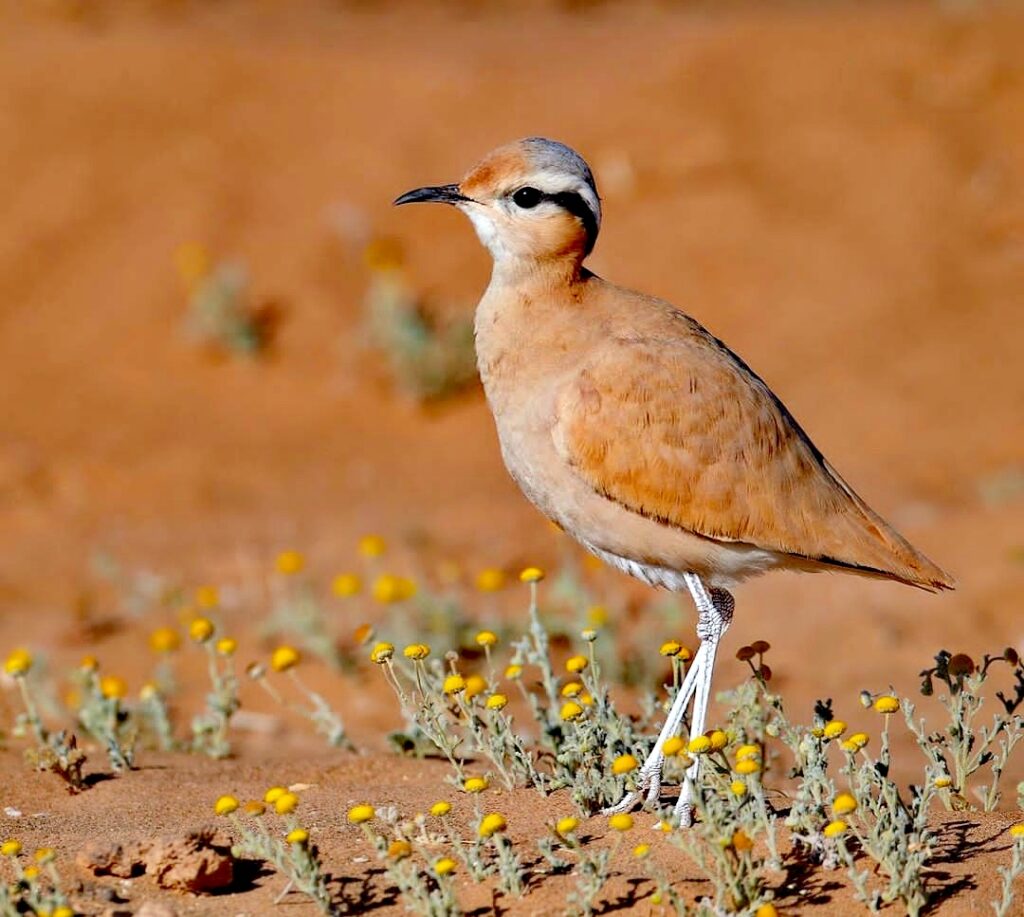Cream-Colored Courser
Encountering a Cream-colored Courser in its natural habitat is a thrilling experience for birdwatchers exploring the desert landscapes of Morocco.
Appearance: The Cream-colored Courser is a slender, ground-dwelling bird with a distinctive appearance. It has long legs adapted for running and a slender, pointed bill. The upperparts are sandy brown with intricate patterns of darker markings, while the underparts are paler cream-colored, giving the bird its name. It has a bold facial pattern with a dark eye-stripe and a pale supercilium.
Habitat: In Morocco, the Cream-colored Courser inhabits arid and semi-arid habitats, including desert scrubland, sandy plains, and dry grasslands. It prefers open areas with sparse vegetation, where it can easily spot prey and move swiftly across the ground.
Behavior: True to its name, the Cream-colored Courser is primarily a ground-dwelling bird, spending much of its time foraging for food on foot. It is well-adapted for running and can move quickly across the ground, using its long legs to chase down insects and other small prey. It is typically active during the cooler parts of the day, such as early morning and late afternoon.
Diet: The Cream-colored Courser feeds primarily on insects, including beetles, grasshoppers, ants, and termites. It uses its sharp bill to probe and pick at the ground, searching for prey among the sand and vegetation. It may also consume small seeds and plant matter opportunistically.
Breeding: Breeding typically occurs during the spring and summer months, with pairs establishing territories and nesting sites on the ground. The female lays a clutch of eggs, usually numbering between two to three, in a shallow scrape lined with plant material. Both parents share the responsibility of incubating the eggs and caring for the young.
Conservation: While the Cream-colored Courser is not considered globally threatened, habitat loss and degradation due to human activities, such as agriculture and development, pose significant challenges to its survival. Conservation efforts focused on habitat protection and sustainable land management are essential for ensuring the continued presence of this unique bird in Morocco and beyond.


